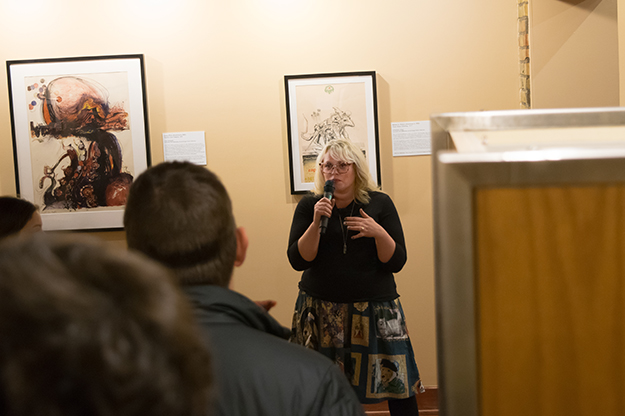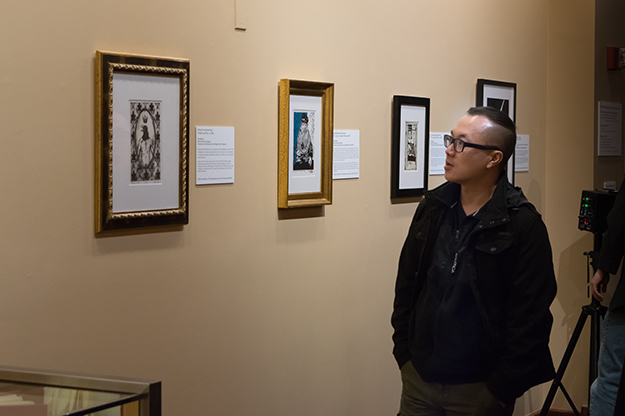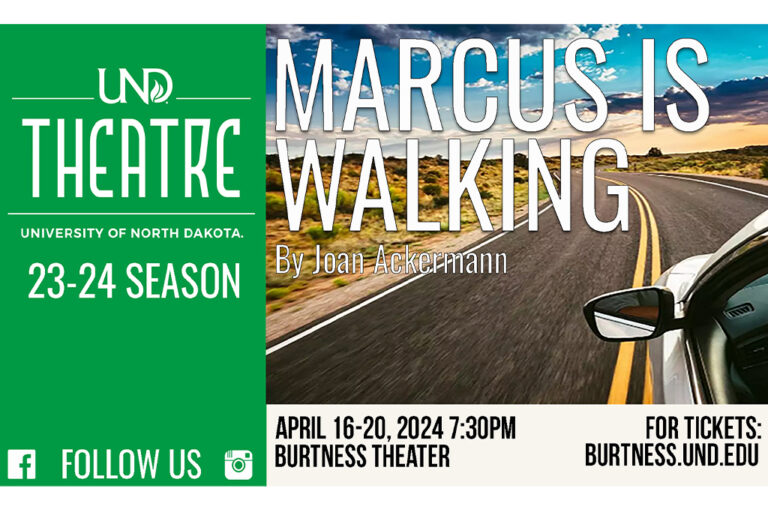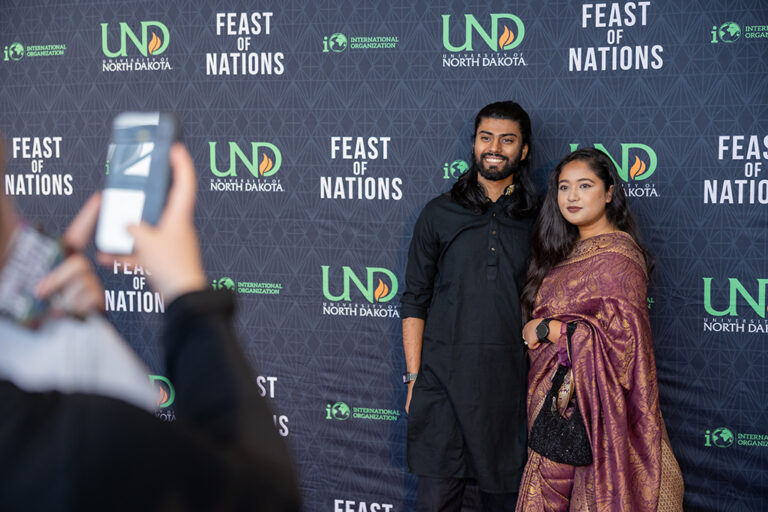Animal antics
The latest UND Art Collections exhibit at the Empire Arts Center spans 200 years of artists’ renditions of the tangled bond between animals and humans

In the early afternoon of Jan. 16, less than a week before the exhibit opening, Sarah Heitkamp and Wes Rabey flanked an artwork, reveling at its minute details. Light cascaded off of their fingers as they hovered above small scratches and scribbles, and threw tiny shadows on the glass. It enclosed a piece by William Bernanrd Schade, a prominent artist from Albany, New York.
The image they were decoding was of a raven, a whimsical depiction of the bird that seems to have flown right out of Schade’s mental coop of various feathered critters that often populate his art.
“I love the way it feels,” said Rabey, facilities technician at the Department of Art & Design at the University of North Dakota.
It feels familiar and foreign at once. The raven is there, with its curious eye and bold beak and sturdy claw. But then, there is a huge hinge on its back, visible measurements around its ruffled body.
“We can think about all the details of the bird being put together,” said Heitkamp, UND Art Collections curator and manager. “There are plans going on. There is that imaginative part of it but there is also a realistic part. It kind of has a foot in both worlds. It is just interesting.”
Heitkamp, who assumed her position last semester, discovered the 1981 piece during a recent inventory update. It piqued her attention so she made a note to return to it.
She did – with the Fables, Insults, and Reverence: The Animals of UND Art Collections exhibit, which premiered this Tuesday at the Empire Arts Center and is to run until the end of March.
First and fresh
In the months leading to the debut, Schade’s raven became the centerpiece, the inspiration that unleashed an artistic theme that had not before graced the walls of the historic Empire building.
“That is a totally new twist that we had never seen in this space before,” said Empire Arts Center Executive Director Emily Montgomery.
The exhibit is also, to put it bluntly, fresh.
The show, as Heitkamp calls it, contains 28 pieces of art, drawings and ceramics. Only three of them had previously been on display.
Contrasted with the pale beige of the walls, the artworks depict a plethora of animals – from bison to lions to rhinos to octopuses. Each channels a facet of the complex allegories and metaphors that bind humans and creatures.
“This exhibition has themes that are based on the title of fables, insults and reverence,” said Heitkamp. “So the themes are really based on storytelling.”

Focus on stories
Take the inky raven that commenced it all. A character of folklore, it begs interpretations. Conflictingly, it may even defy them only to sprout new viewpoints.
“Everybody kind of gets to think of their own story to go with it,” said Heitkamp.
Some may ponder over the Down End mark squiggled on top of the raven’s tail. Why is it seemingly misplaced? What does it even mean?
Others might muse over the tall, wide text beneath the critter – Wild Haired 57th Street Raven. Does it exist? In what town?
Rabey, who provided Heitkamp with curatorial assistance for the exhibit, finds all the scrawls that encircle the raven “kind of funny.” Aside from their many evocations, their haziness along the edges intrigues him.
It is the outcome of drypoint etching, a method that involves scratch-drawing on a metal sheet and imprinting the image on paper. The higher the number of impressions, the blurrier the result, Rabey explained.
Two centuries of art
Schade’s creation is hardly the sole piece to spark the imagination with its surreal naturalism. Francisco Goya, for instance, portrays a couple of young women brandishing brooms to chase away several chickens. The scene looks almost idyllic until, at a closer look, the chickens appear without feathers and with men’s heads.
“It is a great piece from one of his more well-known series of works,” said Heitkamp.
Completed in 1799, Goya’s “Ya van desplumados” (“There they go plucked”) is the oldest artwork in the exhibit, which spans over 200 years of the convoluted artistic relationship between humans and animals.
Opposite Goya’s work rest four prints from 2012, the latest pieces. Part of the Wild Ink Print Exchange, they capture the ingenuity of students of various universities that shared portfolios.

Ready for show
Only minutes after they settled on the wall that Jan. 16 afternoon, Xai Lor, graduate research assistant and MFA candidate, swept a wet wipe over the glass of their dark frames. Any specks of dust and fingerprints needed to go.
The exercise was simpler than Lor’s efforts, over the prior weeks, to scrub the inside of the frames of small shavings from cutting their mounts.
“Getting rid of those things seems impossible,” he said. “I had to clean over and over.”
This past Tuesday, after roughly three months of preparation, as people began to stream in at the exhibit’s opening reception, the pieces were spotless and enchanting.
“They look good,” Lor said. “They look good.”


